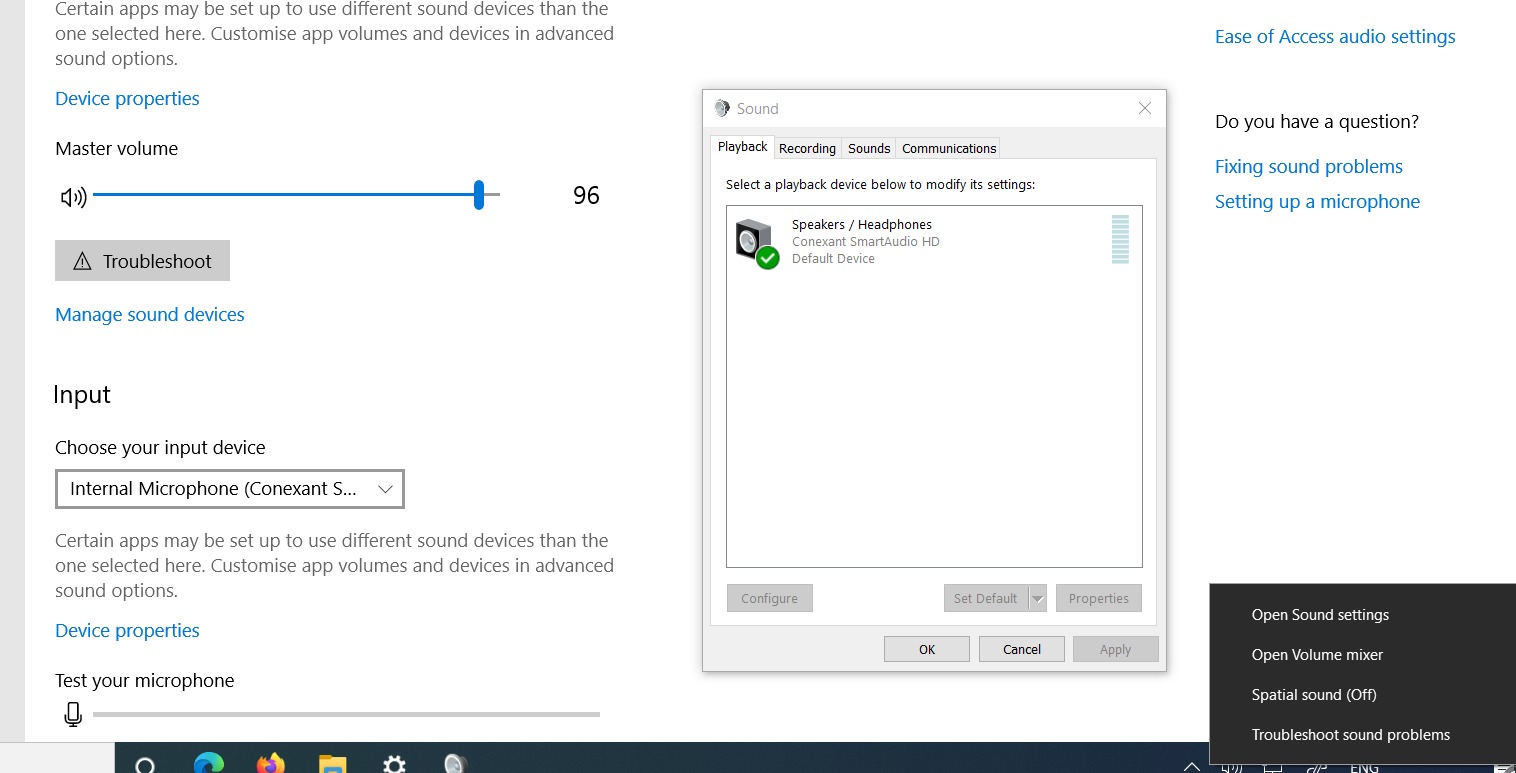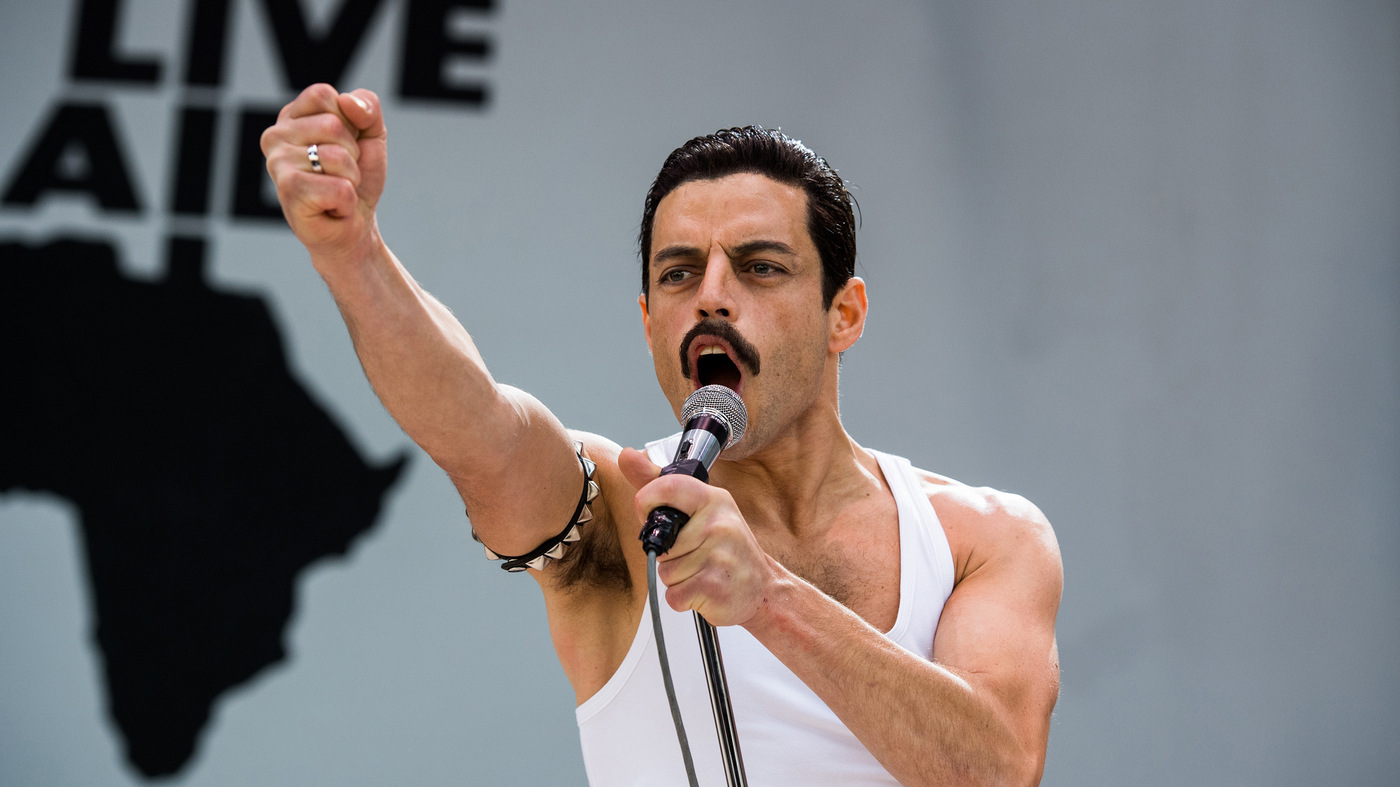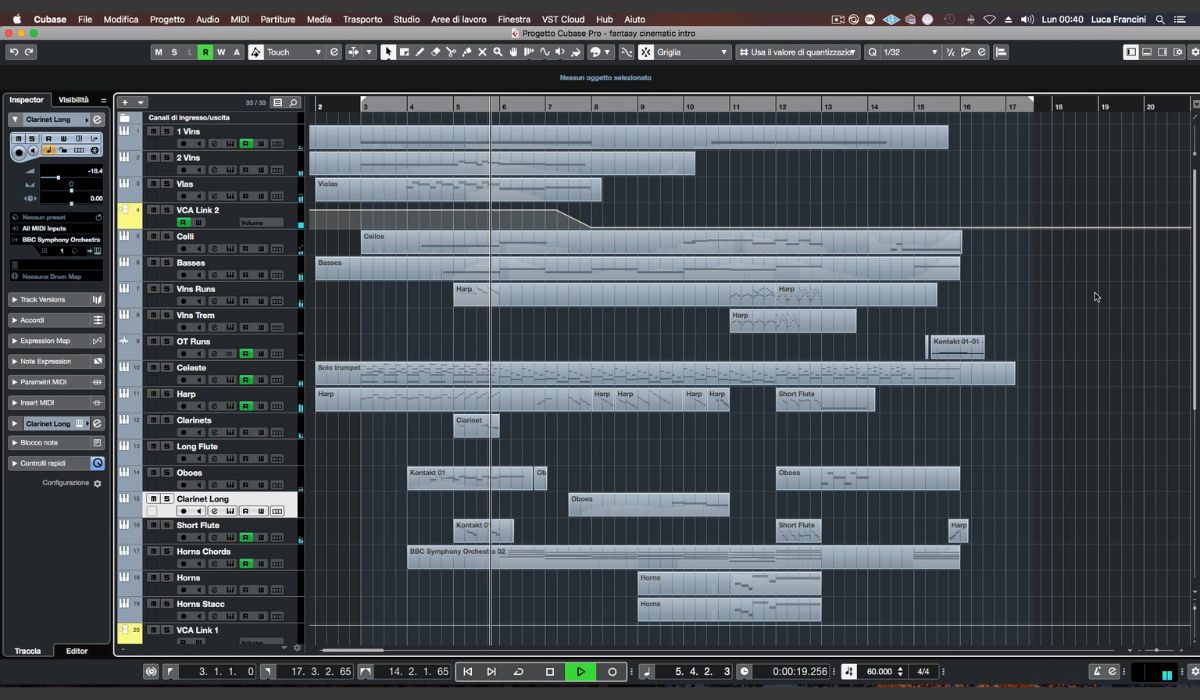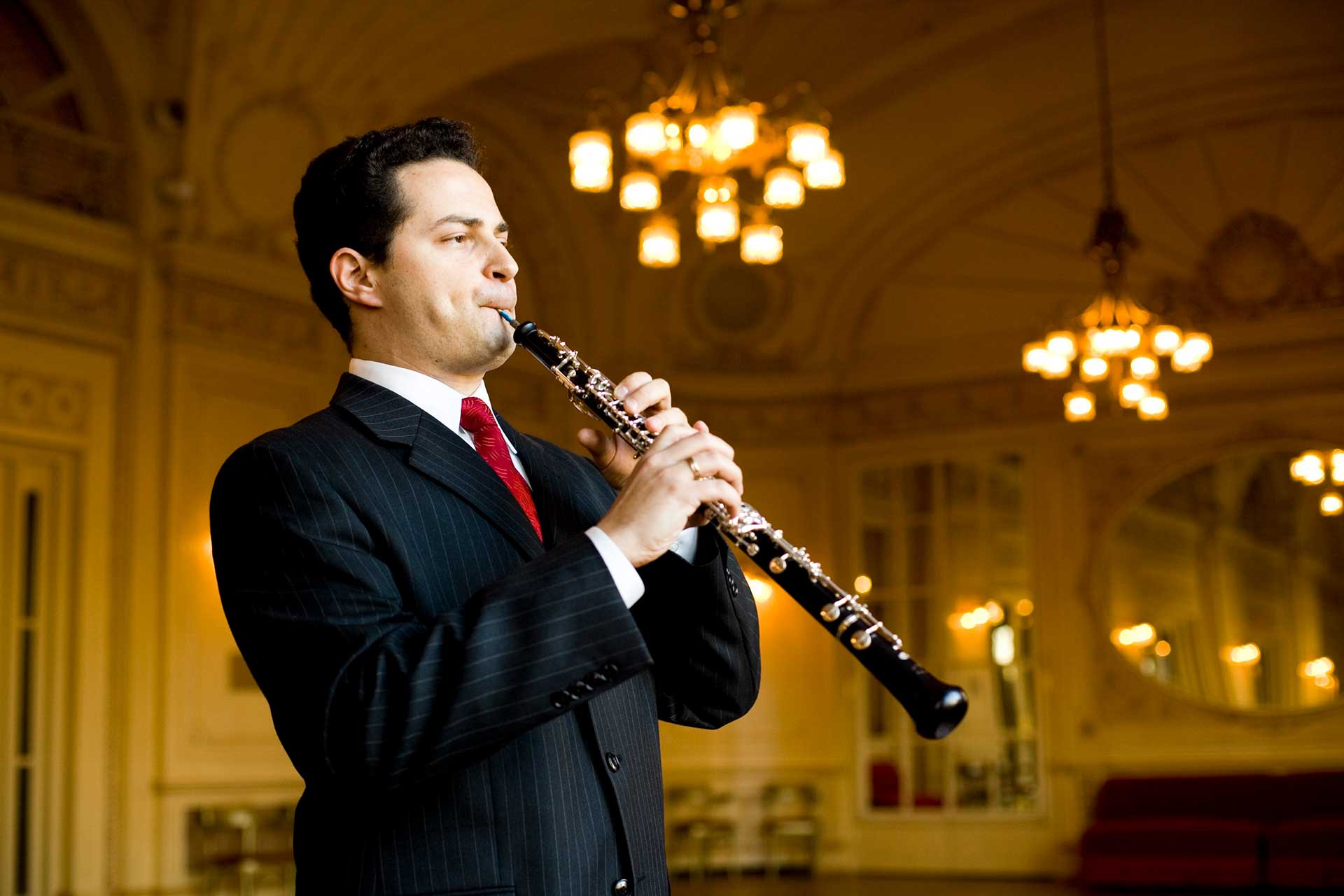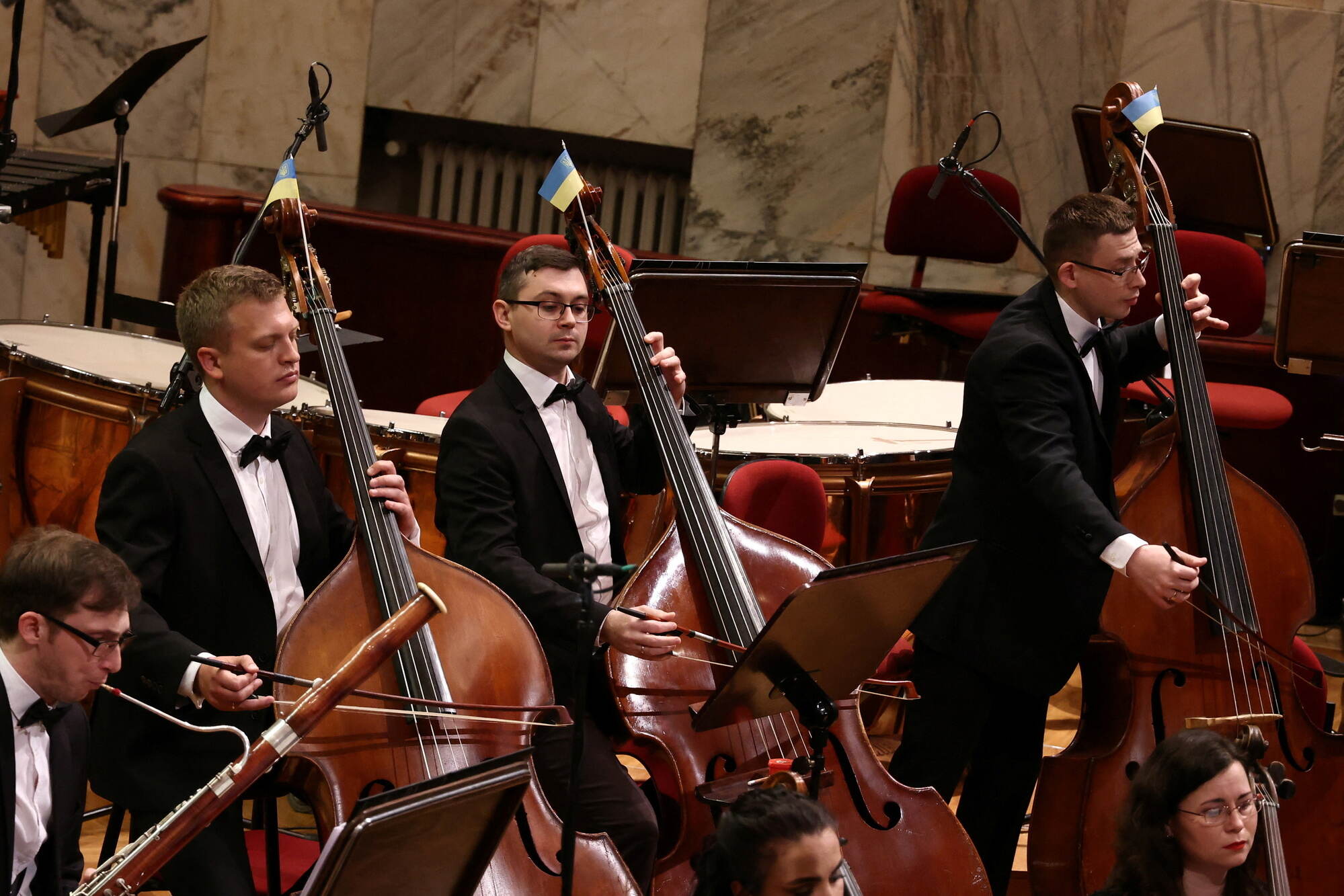Home>Production & Technology>Orchestra>Which Device Does A Conductor Use To Lead An Orchestra?
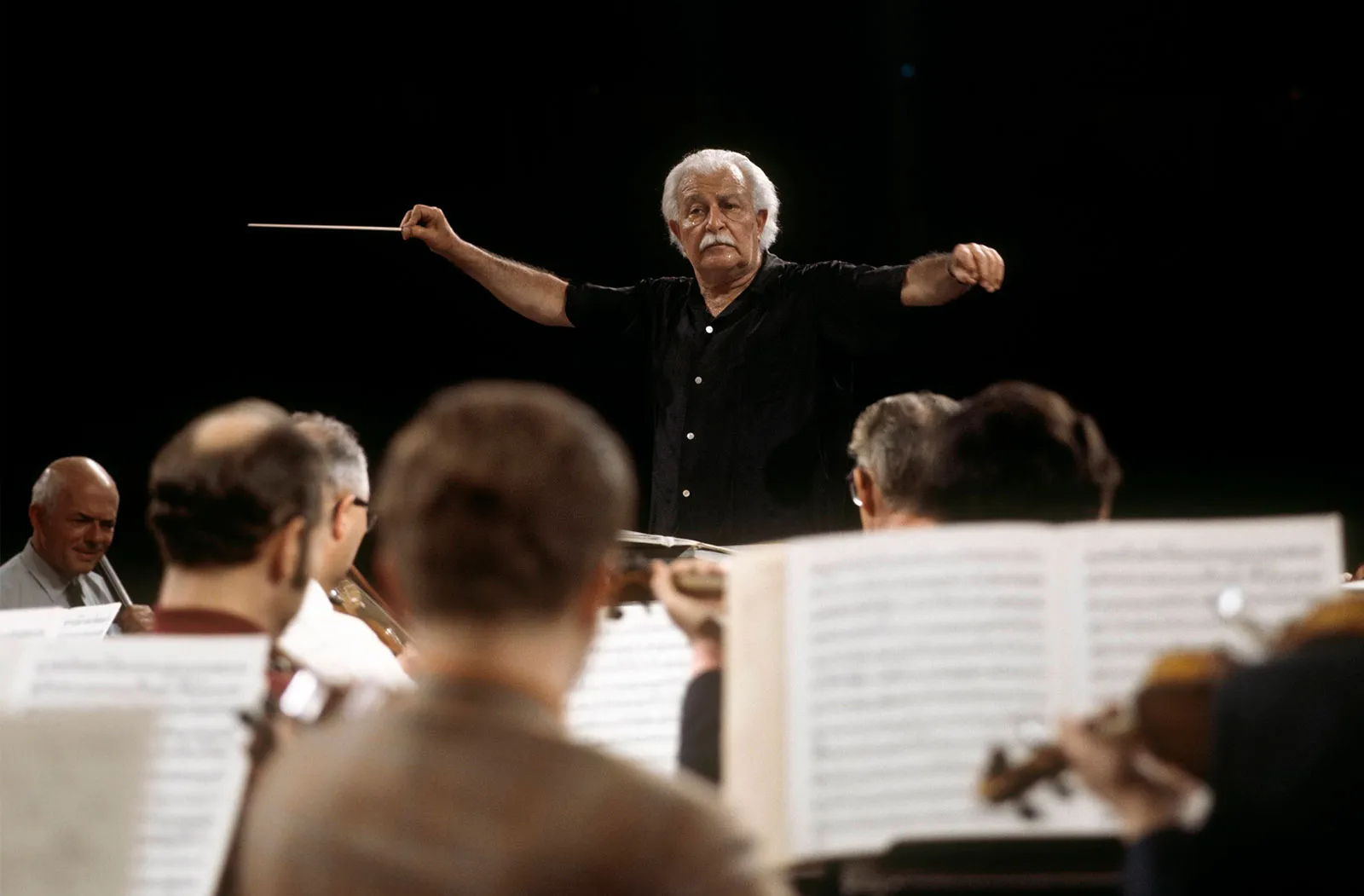

Orchestra
Which Device Does A Conductor Use To Lead An Orchestra?
Published: February 24, 2024
Discover the essential device used by a conductor to lead an orchestra. Learn about the role of a conductor and their unique tool for directing orchestral performances. Explore the world of orchestral music and the art of conducting.
(Many of the links in this article redirect to a specific reviewed product. Your purchase of these products through affiliate links helps to generate commission for AudioLover.com, at no extra cost. Learn more)
Table of Contents
Introduction
Leading an orchestra is a complex and nuanced art form that requires a conductor to communicate with precision, passion, and clarity. The conductor serves as the guiding force, shaping the music and unifying the musicians to create a harmonious and captivating performance. At the heart of this orchestral synergy lies the conductor's tool of choice: the baton.
The baton, a slender wand typically made of wood or carbon fiber, is an extension of the conductor's physical and artistic expression. It serves as a focal point for the musicians, directing their attention and conveying the conductor's musical intentions through subtle yet deliberate movements. While the baton is a crucial element of a conductor's toolkit, it is not the sole means of communication. Hand gestures, eye contact, and verbal cues all play integral roles in the conductor's ability to convey musical interpretations and guide the orchestra towards a cohesive and inspired performance.
In the following sections, we will delve into the multifaceted techniques employed by conductors to lead an orchestra, exploring the significance of the baton, the art of hand gestures, the power of eye contact, and the effectiveness of verbal cues. By gaining insight into these fundamental aspects of orchestral leadership, we can develop a deeper appreciation for the conductor's pivotal role in bringing music to life and uniting individual musicians into a symphonic whole.
The Baton
The baton is an iconic symbol of orchestral leadership, embodying the conductor's authority and artistic vision. When a conductor raises the baton, it signals the commencement of a musical journey, inviting the orchestra to embark on a collective exploration of rhythm, melody, and emotion. Crafted with precision and often personalized to reflect the conductor's style, the baton serves as a conduit for conveying nuanced musical instructions to the ensemble.
The physical attributes of the baton are carefully considered, with its length, weight, and material playing a pivotal role in shaping the conductor's gestures and the resulting orchestral response. A longer baton allows for sweeping, expansive movements that convey broad musical phrases, while a shorter baton facilitates precise, intricate gestures suited for delicate passages. The choice of material, whether traditional wood or modern carbon fiber, influences the baton's responsiveness and the conductor's ability to articulate subtle nuances in the music.
As the conductor wields the baton, each movement becomes a language unto itself, communicating tempo, dynamics, articulation, and phrasing to the orchestra. The baton's trajectory through the air, the angle of its descent, and the clarity of its direction all contribute to the conveyance of musical intent. Through the baton, the conductor shapes the ebb and flow of the music, sculpting its contours and infusing it with expressive depth.
Furthermore, the baton serves as a focal point for the musicians, drawing their attention and unifying their focus. Its presence commands respect and signals the commencement of a shared artistic endeavor. The sight of the conductor's baton in motion serves as a visual anchor, guiding the musicians through intricate passages and fostering a sense of cohesion within the ensemble.
In essence, the baton is more than a mere tool; it is an extension of the conductor's artistic persona, a conduit for musical expression, and a unifying force within the orchestra. As it cuts through the air with purpose and grace, the baton embodies the conductor's unwavering commitment to translating musical scores into living, breathing performances, ensuring that the orchestra moves as one in pursuit of artistic excellence.
Hand Gestures
In the realm of orchestral leadership, hand gestures serve as a dynamic and expressive means of communication, allowing conductors to convey a myriad of musical nuances and directives to the ensemble. Through fluid and deliberate movements, conductors utilize their hands to shape the musical landscape, guiding the orchestra through intricate passages and evoking a spectrum of emotions.
The art of hand gestures encompasses a diverse array of motions, each imbued with specific meanings and intentions. A sweeping upward gesture may signal a crescendo, urging the musicians to intensify their playing, while a gentle, circular motion can convey a sense of fluidity and grace, prompting the orchestra to imbue the music with lyrical phrasing. Additionally, punctuated staccato movements can articulate precise articulation, guiding the musicians to articulate each note with crispness and clarity.
Beyond the conveyance of dynamics and articulation, hand gestures also serve as a visual manifestation of the conductor's emotional connection to the music. A conductor's hands may mirror the contours of a melody, tracing its undulating lines through the air, or express the rhythmic pulse of a composition through pulsating motions, instilling a sense of vitality and momentum within the orchestra.
Furthermore, hand gestures facilitate non-verbal communication between the conductor and the musicians, transcending linguistic barriers and fostering a shared understanding of musical interpretation. The intricate interplay of hand movements, coupled with the conductor's unwavering focus and expressive demeanor, creates a symbiotic dialogue between conductor and orchestra, enabling the seamless translation of musical concepts into tangible performances.
In essence, hand gestures serve as a conduit for the conductor's artistic sensibility, allowing for the nuanced expression of musical ideas and the cultivation of a cohesive, unified ensemble. Through the eloquence of their gestures, conductors breathe life into musical scores, imbuing them with vitality, emotion, and interpretive depth, thereby enriching the orchestral experience for musicians and audiences alike.
Eye Contact
The power of eye contact transcends mere visual communication; it serves as a profound and intimate means through which conductors connect with their orchestras. When a conductor locks eyes with a musician, a silent dialogue unfolds, conveying a wealth of unspoken understanding and musical nuance. This non-verbal exchange fosters a deep sense of unity and shared purpose within the ensemble, elevating the orchestral performance to a heightened level of artistry.
Through deliberate and purposeful glances, conductors establish a profound sense of connection with individual musicians, imparting encouragement, affirmation, and guidance. A fleeting gaze directed towards a section of the orchestra can instill a sense of assurance and solidarity, emboldening the musicians to perform with confidence and conviction. Conversely, a subtle nod accompanied by a meaningful look can convey a nuanced musical interpretation, inspiring the targeted musicians to infuse their playing with the conductor's intended emotion and expression.
Moreover, eye contact enables conductors to seamlessly navigate musical transitions and cues, fostering a cohesive and synchronized performance. By establishing visual rapport with specific instrumentalists or sections, conductors can deftly signal entrances, tempo changes, and dynamic shifts, ensuring that the orchestra moves as one in response to their unspoken directives. This unspoken dialogue, facilitated by the conductor's unwavering gaze, empowers the ensemble to navigate complex musical passages with precision and unity.
Furthermore, the conductor's eye contact serves as a conduit for fostering a sense of collective engagement and investment in the music. When musicians feel seen and acknowledged by the conductor, they are imbued with a heightened sense of purpose and commitment, propelling them to invest their utmost artistry and passion into their performance. This reciprocal exchange of visual acknowledgment and emotional resonance creates an atmosphere of mutual respect and shared dedication, nurturing a collaborative spirit within the orchestra.
In essence, eye contact transcends the realm of visual communication, evolving into a profound and transformative tool for orchestral leadership. Through the eloquence of their gaze, conductors forge a silent yet potent bond with their musicians, fostering unity, clarity, and emotional resonance within the ensemble. This unspoken dialogue, woven through the fabric of eye contact, imbues orchestral performances with a depth of connection and artistry that transcends the confines of verbal expression.
Verbal Cues
In the intricate tapestry of orchestral leadership, verbal cues serve as a vital means through which conductors impart nuanced musical instructions and facilitate seamless transitions within the ensemble. While the baton, hand gestures, and eye contact form the cornerstone of non-verbal communication, verbal cues provide a direct and explicit channel for conveying specific musical intentions and guiding the orchestra through complex passages.
The conductor's verbal cues encompass a diverse array of linguistic directives, ranging from subtle prompts to decisive commands, each tailored to elicit a precise musical response from the musicians. Through succinct yet expressive language, conductors articulate dynamic shifts, tempo variations, and interpretive nuances, providing the orchestra with clear and actionable guidance. A well-timed "crescendo" may ignite a surge of intensity within the ensemble, while a whispered "ritardando" can delicately usher the musicians into a tranquil deceleration, shaping the musical narrative with finesse and clarity.
Moreover, verbal cues serve as a catalyst for synchronized ensemble performance, enabling conductors to synchronize the orchestra's collective actions with unwavering precision. By employing strategic verbal directives, conductors can seamlessly navigate intricate musical transitions, cueing specific instruments or sections with precision and cohesion. Whether signaling a pivotal entrance, a subtle accelerando, or a dramatic pause, verbal cues empower conductors to orchestrate the orchestra's movements with eloquence and authority, ensuring that the ensemble operates as a unified and harmonious entity.
Furthermore, verbal cues foster a shared understanding of interpretive nuances and musical phrasing, engendering a collaborative dialogue between conductor and musicians. By articulating expressive descriptors and emotive adjectives, conductors imbue the music with evocative imagery and nuanced emotional depth, inviting the orchestra to imbue their performance with a rich tapestry of expressive artistry. Through the eloquence of their verbal directives, conductors ignite the ensemble's imagination, fostering a collective commitment to realizing the full spectrum of musical expression encapsulated within the score.
In essence, verbal cues represent a pivotal facet of orchestral leadership, enabling conductors to articulate precise musical intentions, synchronize ensemble performance, and cultivate a shared interpretive vision. Through the artful integration of verbal communication alongside non-verbal gestures, conductors orchestrate a symphony of interconnected directives, guiding the orchestra towards a performance that resonates with clarity, unity, and expressive depth.
Conclusion
In the realm of orchestral leadership, the conductor's role transcends mere timekeeping and direction; it embodies a profound fusion of artistic interpretation, emotional resonance, and unifying guidance. As we have explored the multifaceted techniques employed by conductors to lead an orchestra, it becomes evident that the conductor's toolkit extends far beyond the iconic baton. While the baton serves as a tangible extension of the conductor's physical expression, hand gestures, eye contact, and verbal cues form an intricate tapestry of communication through which conductors imbue the music with vitality, emotion, and interpretive depth.
Through the eloquence of hand gestures, conductors breathe life into musical scores, shaping the orchestral landscape with fluidity, precision, and expressive nuance. Each sweeping motion, each delicate gesture, becomes a conduit for conveying a myriad of musical nuances, fostering a shared understanding and unity within the ensemble. Hand gestures transcend the realm of physical movement, evolving into an art form that embodies the conductor's emotional connection to the music and the orchestra's collective narrative.
Furthermore, the power of eye contact emerges as a transformative tool for forging a silent yet potent bond between conductor and musicians. Through deliberate glances and meaningful gazes, conductors establish a profound sense of connection, fostering unity, clarity, and emotional resonance within the ensemble. This unspoken dialogue, woven through the fabric of eye contact, imbues orchestral performances with a depth of connection and artistry that transcends the confines of verbal expression.
In conjunction with non-verbal communication, verbal cues serve as a vital means through which conductors articulate precise musical intentions, synchronize ensemble performance, and cultivate a shared interpretive vision. The conductor's linguistic directives, whether subtle prompts or decisive commands, ignite the ensemble's imagination, fostering a collective commitment to realizing the full spectrum of musical expression encapsulated within the score.
In essence, the art of orchestral leadership is a symphonic synthesis of physicality, emotion, and communication, woven into a tapestry of gestures, glances, and words. Through the conductor's unwavering commitment to translating musical scores into living, breathing performances, the orchestra moves as one in pursuit of artistic excellence. As we reflect on the conductor's mastery of the baton, hand gestures, eye contact, and verbal cues, we gain a deeper appreciation for the conductor's pivotal role in bringing music to life and uniting individual musicians into a symphonic whole.

